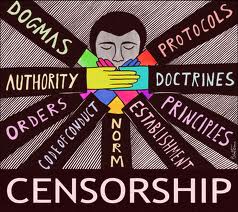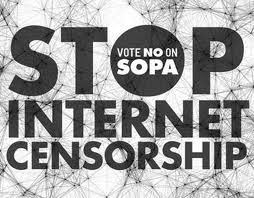 The other day, I received an email from the non-profit where my mom works about the auction items that would be available at their annual special event. Having worked behind the scenes at similar events in the past, one thing came to mind — payment processing. In my experience, the task requires a lot of attention to detail in order to make sure things run smoothly.
The other day, I received an email from the non-profit where my mom works about the auction items that would be available at their annual special event. Having worked behind the scenes at similar events in the past, one thing came to mind — payment processing. In my experience, the task requires a lot of attention to detail in order to make sure things run smoothly.
This reminded me about a podcast I listened to that mentioned how stores are now able to process payments right from their smart phones using a service called Square. Square provides a free card reader that can be attached to any IOS or Android device (through the headphone jack) to process payments from anywhere. Think about how this flexibility could revolutionize a special event or even the everyday business of a non-profit. Let’s take a look and if it’s the right fit for your organization.
The Pros:
- Free Card Reader – I mean, free is good for anyone, even better if you work for a non-profit. Not only is the adapter free, but the app associated with it is free as well.
- Familiar Format – Most people have a smart device of some sort and are used to using apps everyday. This prior knowledge can come in handy when it comes to training people to use Square. Furthermore, this familiarity can expand the pool of people who could use a Square card reader to accept donations.
- Next Day Direct Deposit – It won’t take long to see those donations show up in the linked bank account. Money is only good, when it’s available, right? Most times after an event, it can take a few days of coordination to get credit card payments, checks and cash in order to take it to the bank. Using Square at least cuts out some of that process.
- Secure – Square constantly monitors what is happening across it’s network to look for signs of fraud. Also, Square makes sure that all information in encrypted.
- All Major Cards are Accepted – No need to limit payments only to Visa and Master Card. Amex and Discover are welcome here, too.
- Data can be Exported – Accurate financial documents are important to the running of any business. Square allows you to have access to that data and you can run your own reports.
- Allows for Multiple Users – Each device can be linked to one account so that there can be multiple people at an event. Also, if staff or volunteers have a Square reader and their phone with them out in the community while talking about your mission, a donation by a newly inspired donor can be taken right away without any waiting.
- Receipts – can be emailed to donors or printed on site when using an iPad.
- No signature needed for payments under $25 – In a day an age where people are donating (albeit in smaller amounts), this feature speeds up the donation process.
The Cons:
- Not everyone has a smart device – sad, but true. Even in 2012.
- 2.75% Transaction Fee – if a $100 donation is collected, your organization will only receive $97.25 after Square collects it’s fee. Granted, you are still receiving most of the money. The fee is collected per transaction and is the same no matter which card is used to process the transaction.
- Customer/Donor information is not saved – while this is for the privacy of the customer, most non-profits see this information as essential for their donor database records. One suggestion to overcome this is to give each person a unique number that is attached to their name and contact information. Each transaction made with Square can be edited before it is processed so that this number can be attached.
- No Offline Payments – If your event is somewhere with no cell phone data coverage or wifi available, you will have move to your Plan B option because payments cannot be collected and uploaded later.
- One Time Payments Only – if you had a donor that wanted to donate $10 a month, this could not be accomplished with Square.
I must admit . . . I am in favor of using Square for the collection of donations (besides, it’s hip to be square) . . . but in the interest of full disclosure, I should admit that I have never used the system myself nor do I have any affiliation with Square. Truth be told, I just wanted to share the system with you because I’ve seen other non-profits struggle with credit card processing (which is never a pretty sight especially at an event with donors rushing to checkout and get home) and I thought this might work for you.
Incorporating technology can make the donation experience easier and more streamlined for the donor. After all, if the donation process is easy and enjoyable, I suspect donors will be more likely will donate again! Right?
Is Square a solution you might be interested in? What has your organization done to streamline its onsite payment procedures? Please share your thoughts using the comment section below!












 Yesterday, I was meeting a friend and someone I recruited to the Boys & Girls Club of Elgin board of directors almost a decade ago for breakfast. Well, I was a dunderhead and accidentally showed up 30 minutes early. While I was sitting there twiddling my thumbs, I couldn’t help watch this mother and grandmother having breakfast with their 3-year-old boy. By the time my friend showed up for breakfast, this young boy had blessed me with a fundraising epiphany.
Yesterday, I was meeting a friend and someone I recruited to the Boys & Girls Club of Elgin board of directors almost a decade ago for breakfast. Well, I was a dunderhead and accidentally showed up 30 minutes early. While I was sitting there twiddling my thumbs, I couldn’t help watch this mother and grandmother having breakfast with their 3-year-old boy. By the time my friend showed up for breakfast, this young boy had blessed me with a fundraising epiphany.









